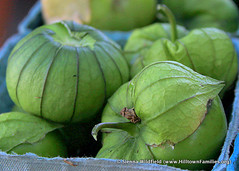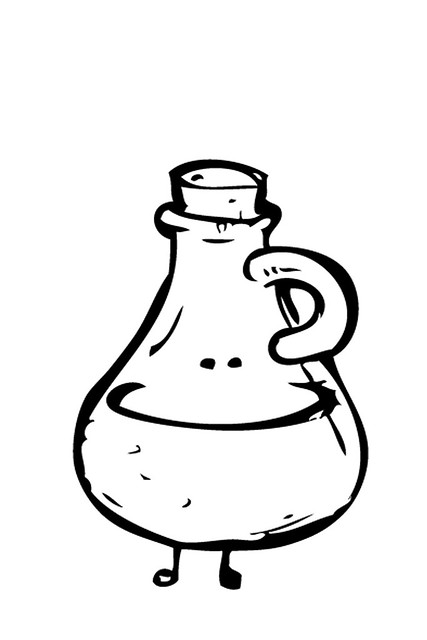Kombucha is one of the hottest topics in the beverage market today. And, like so many products that seem to find the consumer spotlight, it’s not without its share of controversy. Claims of health benefits, discussions of ingredients – and especially, the question of “raw” versus pasteurized versions – swirl around this tea-based drink.
It’s not new – and it’s not about mushrooms
Kombucha – a concoction of bacteria and yeast fermented in sweet tea – has been traced back more than two thousand years, to 221 B.C. in China.1 While the drink is called various things including “Manchurian mushroom,” the tea fungus is not actually derived from any mushroom.
For centuries, kombucha was home-brewed and consumed largely in China and Russia. In the home-brewing process, the microbial concoction of bacteria and yeast floats like a “blob” on the surface of the tea base; during fermentation, a second layer of this mixture forms on top of the original one. This second layer was traditionally passed from person to person, much like people share sourdough starter.2
Kombucha had been touted informally as a home remedy for years; consumer drinks hit the U.S. market in earnest around 2000, with multiple companies offering a kombucha product. This is when it got interesting, as different products made different claims.
The big question: To pasteurize, or not to pasteurize?
As the commercial market for kombucha has grown, a distinct dividing line has developed between pasteurized kombucha drinks and non-pasteurized drinks. Proponents of pasteurization say that it produces a much more stable, safe and legal product without affecting kombucha’s positive effects. The non-pasteurized side claims that “raw, natural” kombucha is the only way to go – that pasteurization removes the health benefits. This claim is made despite the fact that many foods we normally consume are pasteurized, including milk, juice and everything that is cooked.
The issue falls into two main areas of debate: probiotics and the fermentation process.
Probiotics
One of the disputes concerning kombucha is over the presence of “probiotics.” Probiotics are microorganisms that already exist in the human digestive system and are prized because they are thought to be “good bugs” that have a healthful benefit when ingested through food or supplements. Made popular by food products such as yogurt, probiotics include specific bacterial strains of Lactobacillus and Bifidobacteria and the yeast Saccharomyces boulardii. Makers of non-pasteurized kombucha drinks claim that some of these organisms exist in kombucha and that pasteurization kills off these helpful bugs.
In fact kombucha is very different than yogurt – it is far more acidic. Probiotics are known to be unable to thrive in this acid environment, as is true of almost all other microbes. In contrast, the kombucha culture is made up of yeast and bacteria that can live in this acidic environment. The yeast and bacteria found in the kombucha fermenting culture are not normally found in the human digestive system. Indeed, there is no research that shows probiotics are present in kombucha at all, let alone that there is a health benefit.
Some kombucha manufacturers claim that their products contain Lactobacillus or Saccharomyces boulardii, but this is unlikely considering that neither can live for long in such an acidic environment. Manufacturers of probiotic supplements are well aware that it is difficult to get probiotic microorganisms through the acidic conditions of the stomach, so just ingesting them is no guarantee they will reach the gut. The benefits of probiotics have so far been associated with specific illnesses such as acute diarrhea and other intestinal disorders. Furthermore, there is no consensus on the number of probiotic microorganisms that are required, but it is certainly at least several billion3.
Fermentation
A second factor in the pasteurization debate revolves around the fermentation process itself. While of course fermenting is what creates kombucha drinks, the process can have negative affects if not controlled. And this is where the two sides of the issue diverge. Pasteurization stops fermentation at a precise point in the process, while “raw” kombucha that is not pasteurized continues to ferment in the container.
Kombucha is full of many things our body needs, but the first step in the fermentation process is making alcohol from sugar. This is true of all kombucha products, and is identical to the process of making beer and wine. The kombucha fermentation process produces alcohol as long as sugar is present, and all kombucha products use sugar (beer and wine fermentations use up all the sugar). Fermentation will continue in kombucha when refrigerated and sitting on a store shelf, just more slowly. The recent problem of elevated alcohol in raw kombucha products resulted in a nationwide recall (some products contained over 3% alcohol), illustrates why halting the fermentation process is necessary in kombucha. Although many people are not concerned with alcohol levels over the legal limit of 0.5%, children and pregnant women shouldn’t be drinking alcohol. Furthermore, recovering alcoholics and those sensitive or allergic to alcohol need to know the actual alcohol content of products they are considering purchasing.
Ongoing fermentation is a problem for reasons of quality and taste. Many kombucha products are made with essentially the same cultures that have been passed from person to person for the last two decades, which contain wild and unwanted yeasts and bacteria. As beer and wine makers are well aware, these spoilage organisms can produce undesirable ‘off flavors.’ Continued fermentation will make these off flavors along with the alcohol. A major university study examined the fermentation process and timeline, and the resulting effects on the finished product. It concluded that controlling the fermentation process was the only way to obtain the desired quality in the finished beverage.4 While pasteurization is not the sole method for stopping fermentation, chemical treatments would not be palatable to most consumers and would not be allowed under organic rules. Sterile filtration is another option, but this method is known to strip flavor and color from the product.
General health benefits
There’s little doubt that many people find kombucha to be a good thing for them to drink; anecdotal evidence relates a laundry list of benefits. But the science behind some claims is lacking and can be confusing. One biologist who has studied kombucha extensively summed it up well: “Most of the statements made about the health benefits of kombucha are hearsay and for the most part unsupportable by research. Many myths have been spread by uncritical repetition of information, much of it found on the Internet, with little or no reference to original research or sources of the information.”5
But there is a preponderance of opinion that kombucha does good things, and that has made it worthy of study by scientific researchers. A common experience reported by many kombucha drinkers is an increase in energy and improved digestion. Kombucha contains many acids that are formed during the fermentation of sugar to alcohol, and subsequently the conversion of alcohol to acetic acid by Acetobacter and Gluconobacter bacteria. These acids are a part of our normal energy producing metabolism and they feed directly into that pathway. It is not unreasonable to think that a feeling of an energy ‘lift’ comes from these acids rapidly feeding into this normal process. These acids are unaffected by the pasteurization process.
Research in rats has shown that long-term consumption of kombucha can increase life span, appetite and weight. More recently, research from India on rats and in laboratory experiments has indicated consumption of kombucha has the ability to protect the liver and have antioxidant and antibacterial effects. Though promising, these studies are preliminary and have not been done in humans, but rather in rats and test tubes.6-8
Detoxification
This is an area that has been particularly confusing. Few actual studies have been conducted on this topic, and the results can best be summarized by saying that kombucha may aid in detoxification but there is no evidence that it actually does. Detoxification refers to numerous methods the body has to rid itself of unwanted chemicals, ranging from naturally occurring toxins in food to synthetic chemicals such as drugs. Detoxification is responsible for drugs wearing off after a few hours – everything from alcohol to aspirin.
To keep it relatively simple and understandable, the detoxification powers of kombucha tend to come down to two chemicals: glucuronic and acetic acids. There are several methods the body uses to rid itself of foreign chemicals. The major detox pathway used by the body utilizes glucuronic acid, which is manufactured from sugar in the liver. This chemical is attached to certain toxins so they can be excreted in the urine. Some researchers have identified glucuronic acid in kombucha and others have not. Regardless of whether glucuronic acid is present in kombucha, there is no evidence that it increases the rate of removal of toxins from the body. And because the liver makes glucuronic acid as needed, there is no reason to assume it must be ingested.
In contrast, there is no doubt that kombucha contains acetic acid; acetic acid is the most common acid found in kombucha. And acetic acid is used by the body to rid itself of another major class of toxins, separately from glucuronic acid. Keeping it in real-speak, it contributes to forming something called acetylCoA. This substance is used for a process called acetylation, which removes these toxins from the body. But again, there is no research indicating consuming kombucha increases the excretion of toxins, and no reason to assume consumption of acetic acid would be necessary. Acetic acid is found naturally in the body and is used for many other normal biochemical processes.9
Some studies have suggested an antibacterial effect of kombucha. Acetic acid is known to be antibacterial, and at least one study suggests there are other possible antibacterial components as well. One study examined the assumption that acetic acid alone is responsible for kombucha’s detoxification properties. Researchers found that kombucha “exert(ed) microbial activities” against bugs in the E. coli, Salmonella, Bacillus and Shigella families, among others, and concluded that these findings “suggest the presence of antimicrobial compounds other than acetic acid” in kombucha.10
Tea itself has been found to inhibit the cause of most stomach ulcers, a bacteria called Helicobacter pylori.11 Because this bacteria lives in the stomach lining of many people, and the treatment involves taking three different antibiotics, drinking kombucha may be helpful in suppressing or killing these bacteria, possibly aided by the acetic acid that is found in kombucha.
Conclusion
Like so many segments of the beverage industry, kombucha drink makers are battling for market share. What makes this particular competition so fascinating is the divide along the issue of pasteurization. Given that fermentation is the basis for this drink, controlling that process appears to be a key to several factors. A failure to pasteurize can lead to increasing levels of alcohol, and questions of quality, consistency and taste.






















